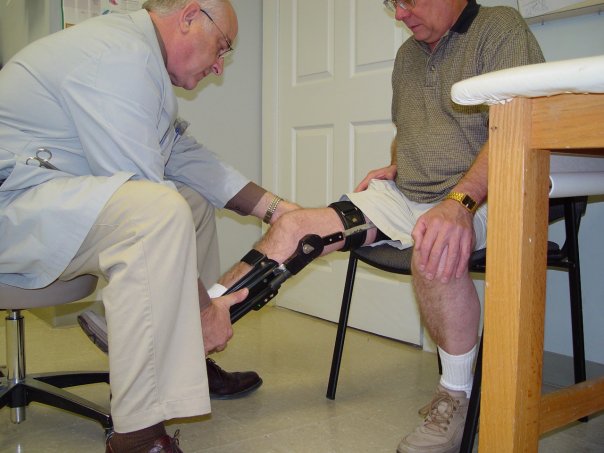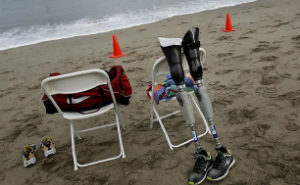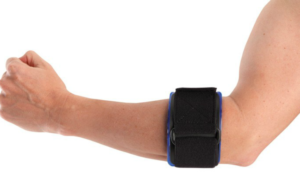Released in 2001, the Horton Stance Control, or stance control orthotic knee joint (SCOKJ), made a substantial impact in the world of stance control orthotics.
For individuals who need better control of their walking ability, the stance control orthotic knee joint (SCOKJ) is an innovative and versatile option. It specifically relieves the issues experienced with more traditional joint orthoses by those who have muscle weakness, polio, multiple sclerosis, paralysis, or other conditions affecting leg strength. Spearheaded by Gary Horton, founder of Horton Orthotics & Prosthetics, this knee joint was developed in cooperation with NASA in order to simplify the device for patient use while utilizing the highest quality technology. The joint continuously adapts to how a user is walking, making it a great choice for individuals who desire a more natural way to move through life.
How the SCOKJ Was Developed
In 1994, Gary Horton, LO, CO, FAAOP, became interested in creating an orthotic knee joint for stance control that would be much more user friendly. So, he began working with NASA scientists to develop the materials and technological design needed to bring an outstandingly workable and affordable stance control orthosis to the market. Over time, he acquired the licensing rights to the SCOKJ and enlisted a machinist and engineer to assist him in perfecting the design.
The efforts of Gary and his design team resulted in the current stance control orthotic knee joint, which was commercially released in 2001. The device employs both medial and lateral joints, meaning the supports sit on the front and sides of the knee. The joint automatically locks and unlocks to block knee flexion at any degree when the wearer is putting weight on it and release to extend the knee as they begin to walk. These specific features, along with the unit’s plastic (rather than metal) cable control, are original innovations that the Horton team devised.
What the SCOKJ Does to Improve Walking Ability
With these technical features, the stance control orthotic knee joint offers more natural knee flexion during the swing phase of an individual’s walking pattern while allowing some flexion of the joint while standing, too. This allows for a more normalized and stable pattern of walking when the patient ambulates on flat surfaces, uneven terrains, stairs, or inclines.
Instead of forcing a rigid lock/unlock sequence when the patient is walking, the SCOKJ’s motion is more dynamic, mimicking what a natural knee does. Knee flexion allows the individual to walk with less effort and less expenditure of energy. The gait is more even or symmetrical as well, helping to prevent some walking problems that can happen over the course of time. In other words, it is simply easier to walk.
Use of the SCOKJ in the Industry Today
The stance control orthotic knee joint is now widely used across the United States and Canada. The joint is manufactured as a unit, and the associated orthotics necessary to make a complete device are made by individual practitioners according to patient need and doctor prescription. Horton Orthotics & Prosthetics has provided training to hundreds of orthotic professionals so they can correctly assess a patient’s gait issues in order to measure, fabricate, and adjust the SCOKJ correctly.
Prior to the SCOKJ’s development, older orthotic devices created for stance control purposes were more static or rigid in the positions and functions they offered individuals. The SCOKJ is a more complex and fluid device, so the consulting practitioner must understand how it performs and what it can do to accomplish the best possible usability and walking patterns for each person.
For more information about the stance control orthotic knee joint and how it could benefit you, contact Horton Orthotics & Prosthetics or call 501-683-8889. Initial consultations with our orthotists are always free of charge.
[maxbutton id=”6″]




Leave a Reply